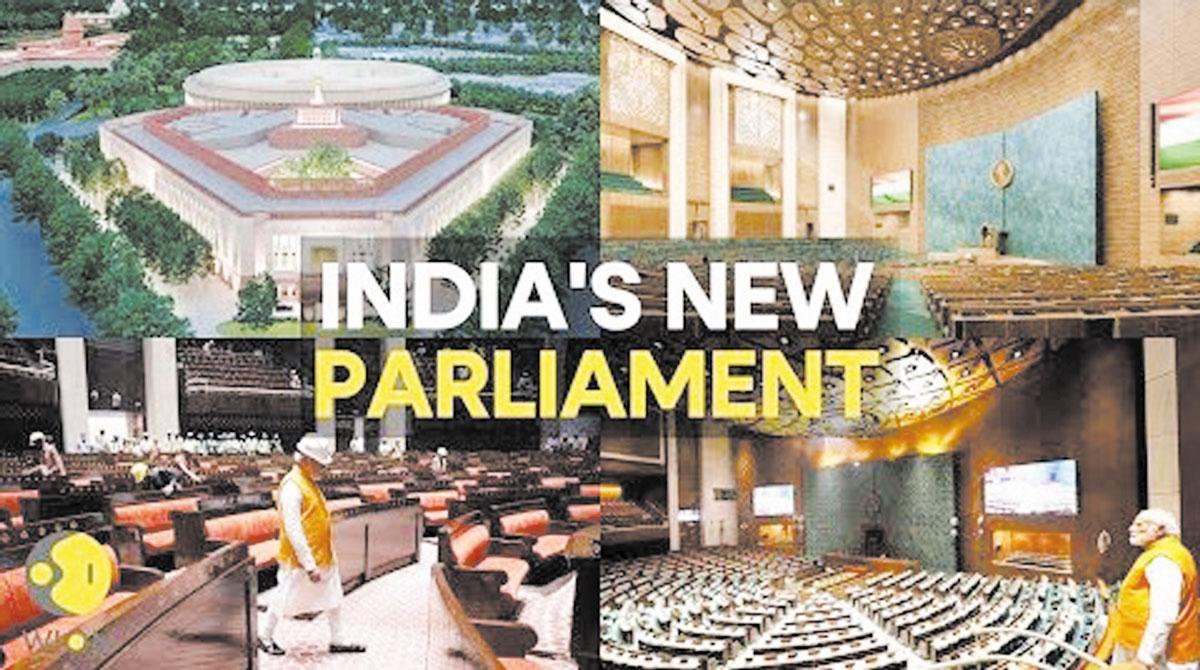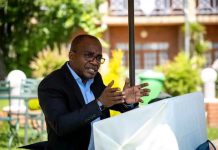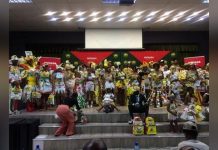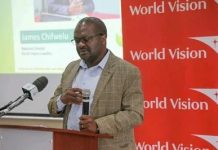Africa-Press – Lesotho. On May 28, 2023, the Indian Prime Minister inaugurated the Naya Sansad, the new Parliament, a sprawling four-storey building designed by Indian architects, built by Indians and dedicated to the Indian population.
It was high time India replaced the old parliament building built by British colonial authorities. The new Parliament’s architecture showcases the symbols of Indian culture in the elaborate sculptures and colourful designs of the ceilings, pillars and shape of the different Houses.
The Lok Sabha House, comprising 888 seats with several colours, is based on the theme of the peacock, the national bird of India. The national flower, the lotus, adorns the Upper House, the Rajya Sabha which has 384 seats.
The Dharma Chakra of Emperor Ashoka reigns majestically over the Speaker’s seat. The inauguration was steeped in Hindu civilizational ethos and cultural values.
Inspired by the country’s rich history, 21 adheenams, respected swamis from Tamil Naidu, started off the inauguration with Vedic chants, in the spirit of the ancient Tamil civilization and the three kingdoms that shared power in Tamil Nadu – the Pallavas, Cholas and Pandyas. The adheenams handed the sacred sceptre ‘Sengol’, which is the symbol of the transfer of power from the British to India, to the Indian PM.
The very idea of bringing up a tradition dating back to the ancient Tamil kingdoms and a map of the neighbouring countries that were under the influence of Indian culture has especially well inspired as it pays due homage to ancient history, it strengthens a sense of continuity between the past and the present, and paves the way for the solid future of a country deeply rooted in its millennial symbols and values.
The Prime Minister prostrated in front of the Sengol, Senmai in Tamil, signifying Righteousness, a symbol of spiritual authority over political authority represented by Parliament.
It embodies the Dharmic concept of responsibility and duty of rulers to govern in accordance with specific ethos and values. Viceroy Lord Mountbatten was the last ruler to have handed over the Sengol to the first Prime Minister of India, Pandit Jawaharlal Nehru in 1947.
Ever since, it was kept in Ananda Bhawan, PM Nehru’s residence. Under the leadership of the current Prime Minister, the government made it a point to save the Sengol from oblivion.
Multi-faith prayers followed the Vedic chants in chronological order of indigenous faiths first, Buddhism including Tibetan Buddhism, Jainism and Sikhism.
Twenty Opposition parties boycotted the inauguration, and their Chief Ministers refused to show up to for a parliamentary session presided by the Prime Minister.
The financial costs of the construction of such a building in a period of economic turmoil was the first reason put forward. The works kicked off during the Covid pandemic in 2020 and lasted nearly two and a half years. However, history is replete with great works undertaken despite widespread economic slowdown.
For More News And Analysis About Lesotho Follow Africa-Press






